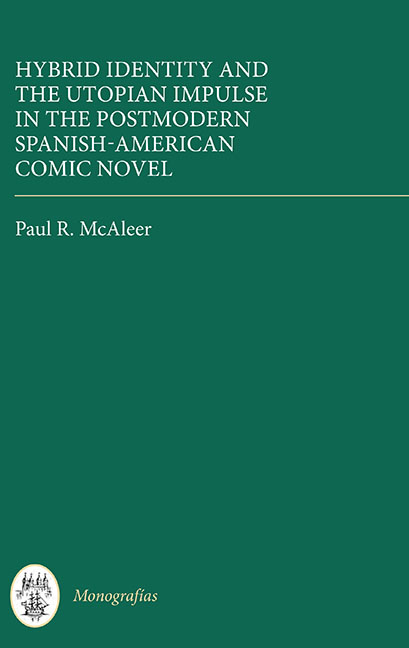Book contents
- Frontmatter
- Contents
- Acknowledgements
- 1 Contextualising the Debate: The European Comic Tradition and the Question of Context
- 2 Gustavo Sainz’s La princesa del Palacio de Hierro: Comedy and the Female Character in Transnational Mexico
- 3 Comic Identity and Cultural Exile in Bryce Echenique’s La vida exagerada de Martín Romaña
- 4 Black Comedy and Identity Loss in Fernando Vallejo’s La virgen de los sicarios: On the Road to Dystopia
- 5 Jaime Bayly’s La noche es virgen: Comic Queer Identities in the Era of Transnationalism
- Utopia, Comedy and Latin American Utopianism: Is This Really the End?
- Bibliography
- Index
3 - Comic Identity and Cultural Exile in Bryce Echenique’s La vida exagerada de Martín Romaña
Published online by Cambridge University Press: 07 May 2022
- Frontmatter
- Contents
- Acknowledgements
- 1 Contextualising the Debate: The European Comic Tradition and the Question of Context
- 2 Gustavo Sainz’s La princesa del Palacio de Hierro: Comedy and the Female Character in Transnational Mexico
- 3 Comic Identity and Cultural Exile in Bryce Echenique’s La vida exagerada de Martín Romaña
- 4 Black Comedy and Identity Loss in Fernando Vallejo’s La virgen de los sicarios: On the Road to Dystopia
- 5 Jaime Bayly’s La noche es virgen: Comic Queer Identities in the Era of Transnationalism
- Utopia, Comedy and Latin American Utopianism: Is This Really the End?
- Bibliography
- Index
Summary
Alfredo Bryce Echenique's La vida exagerada de Martín Romaña (1981) is the first part of the comic diptych Cuaderno de navegación en un sillón Voltaire, the second part of which is El hombre que hablaba de Octavia de Cádiz (1984). The Peruvian author has often insisted that the complete work should be regarded as two novels that must be read as if they were one. However, as Julio Ortega observes, the fact that they were published three years apart by two different publishing houses, as well as the separate developments in plot and narrative style, mean that they can quite rightly be viewed as two distinct works of fiction. This chapter will focus primarily on the first, but, due to the intertextual relationship of the two parts and their constant, overlapping references, it will also refer to the latter.
La vida is perhaps the most conspicuously postmodern of all the texts studied in this book, given the self-referential nature of its narrative. With the very first words of the novel, the narrator informs the reader that he or she has just opened the pages of his ‘cuaderno azul’ that constitutes ‘la historia de mi crisis positiva’ that will eventually be continued in his ‘cuaderno rojo’, El hombre (La vida, p. 51). Both novels, it is made quite clear, are not only to be narrated by the protagonist but have been written or will be written by him at some stage. The narrative process sets up a curious and complex chain of inner-fictions: the novel is about a novel written by the protagonist about his past life, which to all intents and purposes is the novel to be read by the reader. These self-referential and metafictional games have led Julio Ortega to define the two novels as a type of postmodern ‘false’ autobiography that deliberately attempts to blur the ‘extraliterary’ convention with fiction itself (‘Introducción’, pp. 14–15). The supposedly ‘false’ or fictional autobiography technique, however, is not an invention of Bryce. It has long been an important element and dramatic motor of the novel. More pertinently, it is also an important feature of our two generic antecedents: the comic Bildungsroman and the picaresque novel.
- Type
- Chapter
- Information
- Hybrid Identity and the Utopian Impulse in the Postmodern Spanish-American Comic Novel , pp. 75 - 98Publisher: Boydell & BrewerPrint publication year: 2015



